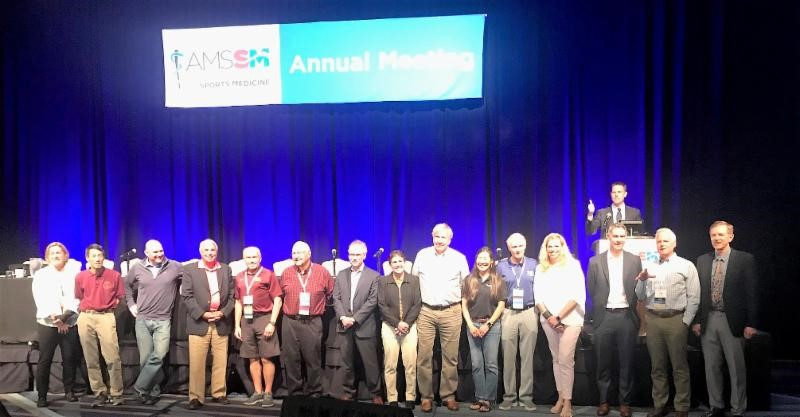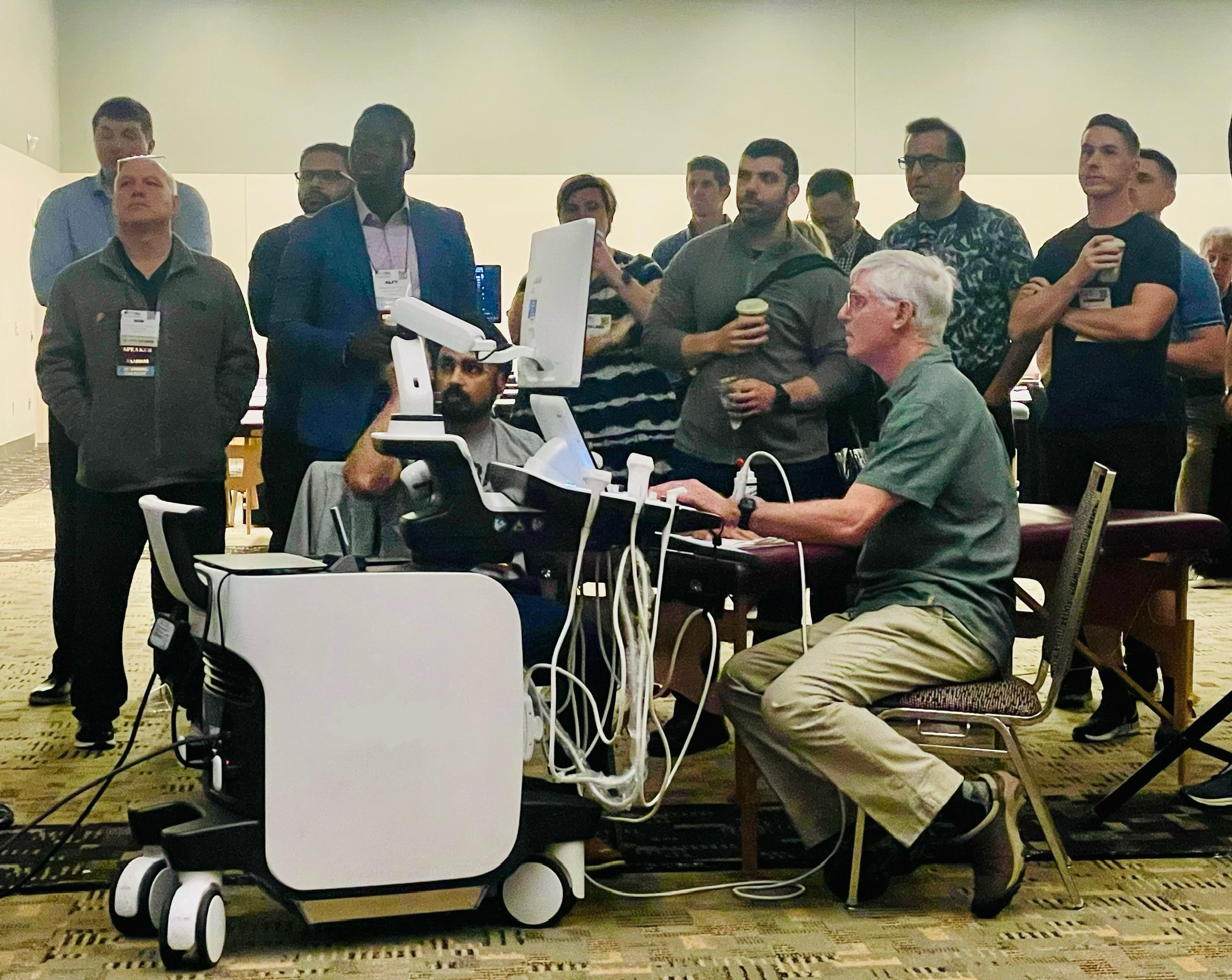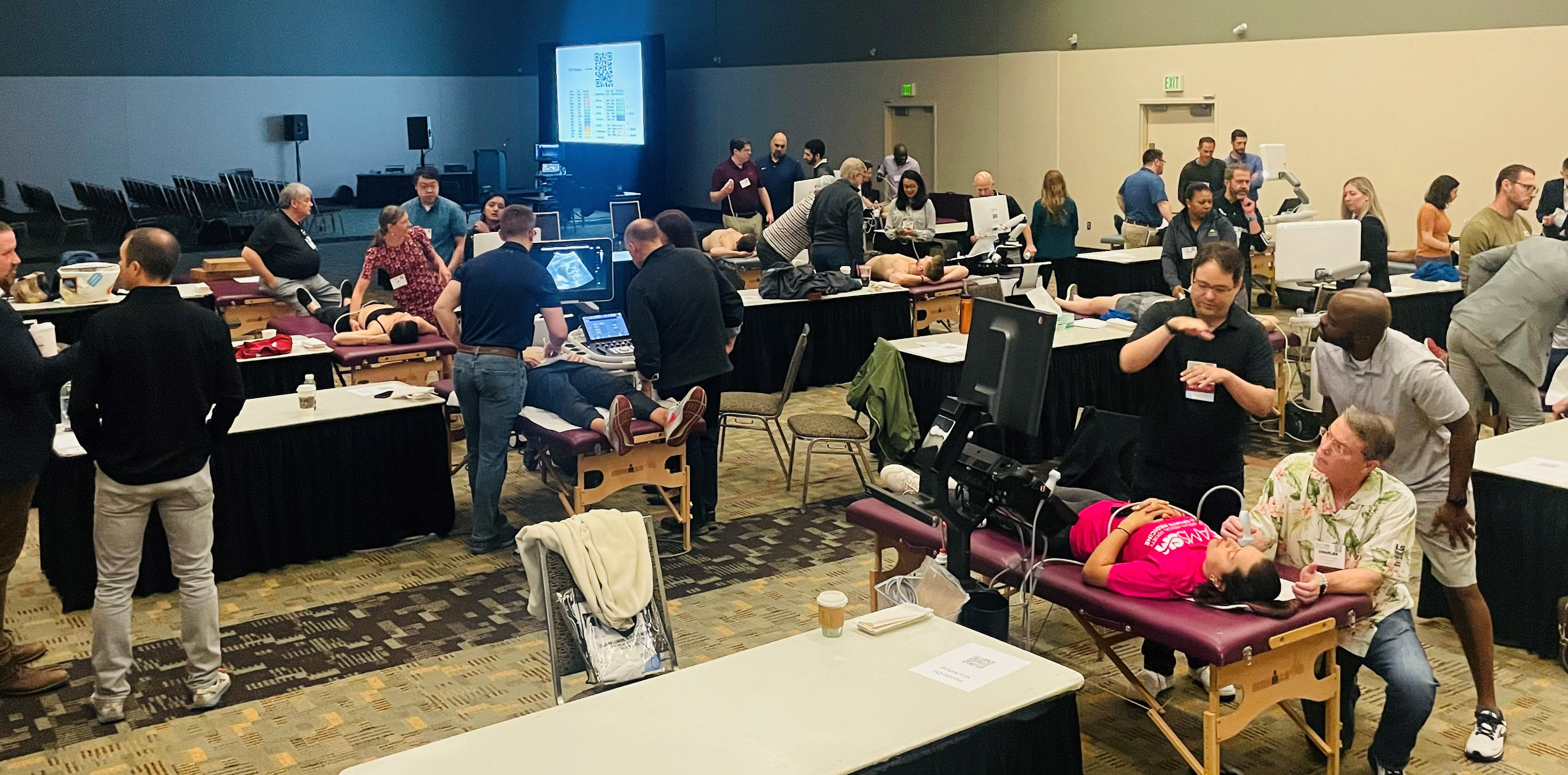Working Diagnosis:
Type 2 Popliteal Artery Entrapment Syndrome with Concurrent Chronic Exertional Compartment Syndrome
Treatment:
Despite two courses of intramuscular botulinum toxin injections and physical therapy, patient had minimal symptom alleviation. An MRI was completed for further work up and revealed an anatomical abnormality that raised suspicion for popliteal artery entrapment syndrome, later confirmed via CT Angiography. He was eventually referred to vascular for bypass surgery and gastrocnemius release.
Outcome:
Patient's right leg symptoms improved, but 5 months later developed similar but less severe findings of entrapment on the contralateral side. He eventually underwent a left sided gastrocnemius release. He then began a gradual return to activity.
Author's Comments:
Diagnosing lower extremity claudication can be difficult due to overlapping clinical features of chronic exertional compartment syndrome and popliteal artery entrapment syndrome. Popliteal artery entrapment syndrome can be classified into six different types Case Photo #4 . Patients frequently present with complex, coexisting conditions that further obscure the diagnosis. Nonetheless, early and accurate identification of popliteal artery entrapment syndrome is essential to prevent complications and initiate appropriate management. This is the first case report to present a type 2 popliteal artery entrapment syndrome Case Photo #5 initially treated as a pressure-confirmed chronic exertional compartment syndrome, with popliteal artery entrapment syndrome ultimately determined as the primary symptom generator.
Editor's Comments:
This excellent case underscores the need for reassessment of patients throughout treatment and careful consideration of alternative diagnoses. Chronic exertional compartment syndrome is by itself an uncommon diagnosis, but popliteal artery entrapment syndrome is even less frequently seen in comparison. While it may appear that both can tend to co-exist, it is likely more plausible that one leads to the other rather than having two uncommon diagnoses exist concurrently in the same patient. Given the rarity of PAES, it is not typically diagnosed early in the course of the disease. This leads the affected limb to be subject to a chronic ischemia-reperfusion injury over time. This repeated process affects ion gradients, produces reactive oxygen species, and alters osmotic movement between fluid compartments reasonably leading to chronically elevated compartment pressures and localized inflammation. This should cause us to keep in mind the possibility of intermittent arterial compression when reviewing any positive compartment testing, especially when we are not seeing results with the initial steps in treatment.
References:
Abou-Ghaida J, Thapaliya D, Rua I. Differential Diagnosis of Popliteal Artery Entrapment Syndrome in Light of an Atypical Clinical Manifestation. Cureus. 2023 Feb 12;15(2):e34889.
Altinsoy HB, Alatas O, Khalil E, Kara KA, Okten CC, Dogan OF. A Very Rare Cause of Lower Limb Ischemia in Young People: Popliteal Artery Entrapment. Open Cardiovasc Med J. 2018;12:18-28.
Altintas U, Helgstrand UV, Hansen MA, Stentzer KF, Schroeder TV, Eiberg JP. Popliteal artery entrapment syndrome: ultrasound imaging, intraoperative findings, and clinical outcome. Vasc Endovascular Surg. 2013 Oct;47(7):513-8.
Armando C, Sherbondy P, Simoni E, Cole S. Type III Popliteal Artery Entrapment Syndrome with Concurrent Chronic Exertional Compartment Syndrome: A Case Report. JBJS Case Connect. 2024 Feb 29;14(1).
Bellomo TR, Hsu C, Bolla P, Mohapatra A, Kotler DH. Concurrent Chronic Exertional Compartment Syndrome and Popliteal Artery Entrapment Syndrome. Diagnostics (Basel). 2024 Aug 21;14(16):1825.
Bradshaw S, Habibollahi P, Soni J, Kolber M, Pillai AK. Popliteal artery entrapment syndrome. Cardiovasc Diagn Ther. 2021 Oct;11(5):1159-1167.
Braver RT. Chronic Exertional Compartment Syndrome. Clin Podiatr Med Surg. 2016 Apr;33(2):219-33.
Carneiro Junior FCF, Carrijo ENDA, Araujo ST, Nakano LCU, de Amorim JE, Cacione DG. Popliteal Artery Entrapment Syndrome: A Case Report and Review of the Literature. Am J Case Rep. 2018 Jan 09;19:29-34.
Cavallaro, Antonino. Popliteal Artery Entrapment. Aneurysms of the Popliteal Artery pp 73-88. 03 October 2020.
Cowled P, Fitridge R. Pathophysiology of Reperfusion Injury. In: Fitridge R, Thompson M, editors. Mechanisms of Vascular Disease: A Reference Book for Vascular Specialists [Internet]. Adelaide (AU): University of Adelaide Press; 2011. 18. Available from: https://www.ncbi.nlm.nih.gov/books/NBK534267/
Davis DD, Shaw, PM. Popliteal Artery Entrapment Syndrome. StatPearls. 2023 Aug 28.
Drigny J, Reboursiere E, Desvergee A, Ruet A, Hulet C. Concurrent Exertional Compartment Syndrome and Functional Popliteal Artery Entrapment Syndrome: A Case Report. PM R. 2019 Jun;11(6):669-672.
Dyrek P, Kuwabara A, Fredericson M. A Rare Case Report of Exertional Leg Pain. Clin J Sport Med. 2024 Mar 1;34(2):149-151.
Gaunder C, McKinney B, Rivera J. Popliteal Artery Entrapment or Chronic Exertional Compartment Syndrome? Case Rep Med. 2017;2017:6981047.
Hicks CW, Black JH 3rd, Ratchford EV. Popliteal artery entrapment syndrome. Vasc Med. 2019 Apr;24(2):190-194.
Hislop M, Kennedy D, Cramp B, Dhupelia S. Functional Popliteal Artery Entrapment Syndrome: Poorly Understood and Frequently Missed? A Review of Clinical Features, Appropriate Investigations, and Treatment Options. J Sports Med (Hindawi Publ Corp). 2014;2014:105953.
Johnson SE, Finnoff JT, Amrami KK, Jelsing EJ. Radiological Prevalence of Popliteal Artery Entrapment in Individuals With Anterior Leg Compartment Chronic Exertional Compartment Syndrome. Clin J Sport Med. 2022 Mar 1;32(2):e160-e164.
Joubert SV, Duarte MA. Chronic Exertional Compartment Syndrome in a Healthy Young Man. J Chiropr Med. 2016 Jun;15(2):139-44.
Lawley RJ, Kasitinon D, Sisk D, Lavingia KS, Lee JT, Fredericson M. Concurrent Diagnosis of Functional Popliteal Artery Entrapment Syndrome and Chronic Exertional Compartment Syndrome in Athletes. Curr Sports Med Rep. 2022 Oct 1;21(10):366-370.
McKinney B, Gaunder C, Schumer R. Acute Exertional Compartment Syndrome with Rhabdomyolysis: Case Report and Review of Literature. Am J Case Rep. 2018 Feb 08;19:145-149.
Neubauer TM, Chin JJ, Hill RD, Hu YE. Popliteal Artery Entrapment Syndrome: Updates for Evaluation, Diagnosis, and Treatment. Curr Sports Med Rep. 2024;23(9):310-315.
Shahi N, Arosemena M, Kwon J, Abai B, Salvatore D, DiMuzio P. Functional Popliteal Artery Entrapment Syndrome: A Review of Diagnosis and Management. Ann Vasc Surg. 2019 Aug;59:259-267.
Velasco TO, Leggit JC. Chronic Exertional Compartment Syndrome: A Clinical Update. Curr Sports Med Rep. 2020 Sep;19(9):347-352.
Williams C, Kennedy D, Bastian-Jordan M, Hislop M, Cramp B, Dhupelia S. A new diagnostic approach to popliteal artery entrapment syndrome. J Med Radiat Sci. 2015 Sep;62(3):226-9.
Williams EH, Rosson GD, Hagan RR, Hashemi SS, Dellon AL. Soleal sling syndrome (proximal tibial nerve compression): results of surgical decompression. Plast Reconstr Surg. 2012 Feb;129(2):454-462.
Return To The Case Studies List.




















